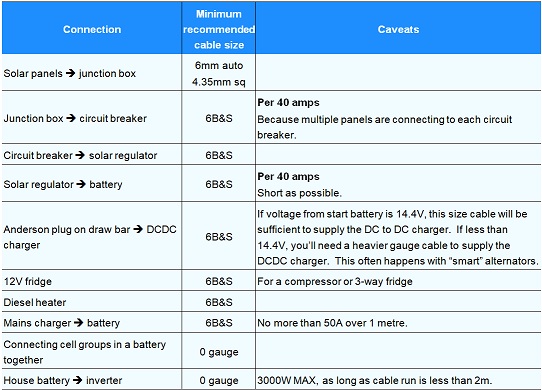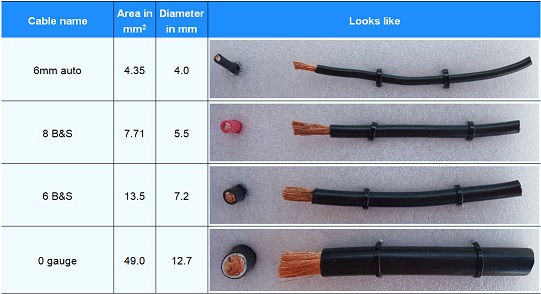Size matters
Fighting a fire with a garden hose
Imagine trying to fight a fire with a garden hose. Fire trucks have huge hoses so that fire fighters can get lots of water to move through that hose. Yes, they also have pumps to increase the water pressure, but that wouldn't be much use if they were trying to send it through a garden hose.
The same principle applies to electricity. If you want to move a lot of electricity to power an inverter to run a hair dryer or an air conditioner, it's not going to happen if the cable connecting your batteries or the cable from your battery to your inverter isn't fit to do the job. The smaller the cable and the more amps you try to push through, the more resistance you're fighting against and the hotter the cable will become and the greater the voltage drop.
Voltage is pressure | Amps is volume
Continuing the water analogy:
Voltage is to electricity as pressure is to water
Amperes is to electricity as volume is to water
Let's get back to the fire fighting. You can move a large volume of water through your garden hose if you don't want it to move very quickly. You can move a small volume of water through your garden hose quickly if it's under pressure. But if you want to move a large volume of water quickly through your garden hose, you'll have to get a bigger diameter garden hose, because:
Cable size is to electricity as the size of your hose is to water: it creates resistance to flow
Cable size is resistance
Whether you have a 12 volt or 24 volt setup in your RV, you're still working with a very low 'water pressure' compared with the 240 volts you have at home.
Direct Current (DC) = high amps / volume moved by low voltage / pressure
You only have 12 volts of 'pressure' to move a quite large amount of amps from the battery. The only way to make it easier for the amps to move from the battery and out to where you want to use that electricity is to increase the size of the cable.
Minimum recommended cable sizes
We've put together a list of minimum cable size we recommend for various applications:

 Don't forget the fridge
Don't forget the fridge
Interestingly, the cable most often undersized and least often seen as an issue is the size of the cable to your fridge. We have helped a lot of people get better performance from their 12V fridge by replacing or recommending replacement of this cable.
What cable size really means
Cable size is not the size of the hole that you need to drill to push the cable through. It's about the size of the conductor. The conductor is the copper wire inside the insulation.
In all RV applications, where movement and flexing is likely to occur, this cable is made up of multiple very small copper strands twisted together – not one solid lump of copper. The size of all these strands twisted together is measured in mm squared.
Then, just in case this was all becoming understandable, industry gives these cable sizes a rating unit of AWG (American Wire Gauge) or B&S (Brown and Sharpe). The two units are interchangeable. The higher the number, the thinner the diameter of the conductor.
We've put together a list of the common cable sizes we use. It's not exhaustive, but we're not trying to exhaust you:

What you see is not always what you get
Just want to show this example as an illustration of the size of the copper conductor versus the size of the insulation. This is a classic example of not getting what you see.
Sold as battery jump start cable
Below is an example of a so-called battery jump start cable, purchased by one of our customers from a nation-wide grocery store:

So-called "battery jump start cable"
This is cable that can supposedly handle 200amps to start your car!
At first glance it looks like reasonably sized cable (still not thick enough to start a car), but when you pare back the insulation and see how much copper is actually in there, it's clear that this cable would simply melt if you tried to jump-start a car. In fact, we wouldn't even use this size conductor to join solar panels together!
Cable actually suitable to jump start a small car
This is zero gauge cable and it will actually start most small cars, though it's still not thick enough to start larger cars. For connecting batteries and inverters, zero gauge is thick enough in most cases.

Zero gauge cable

The cable you most likely have and the cable you should have.
The size of the cabling required to connect multiple solar panels and a close look at the MC4 connectors that come supplied with a solar panel.
Connecting cables with crimps and lugs
The good, the bad and the ugly of various types of connectors used in a typical RV.